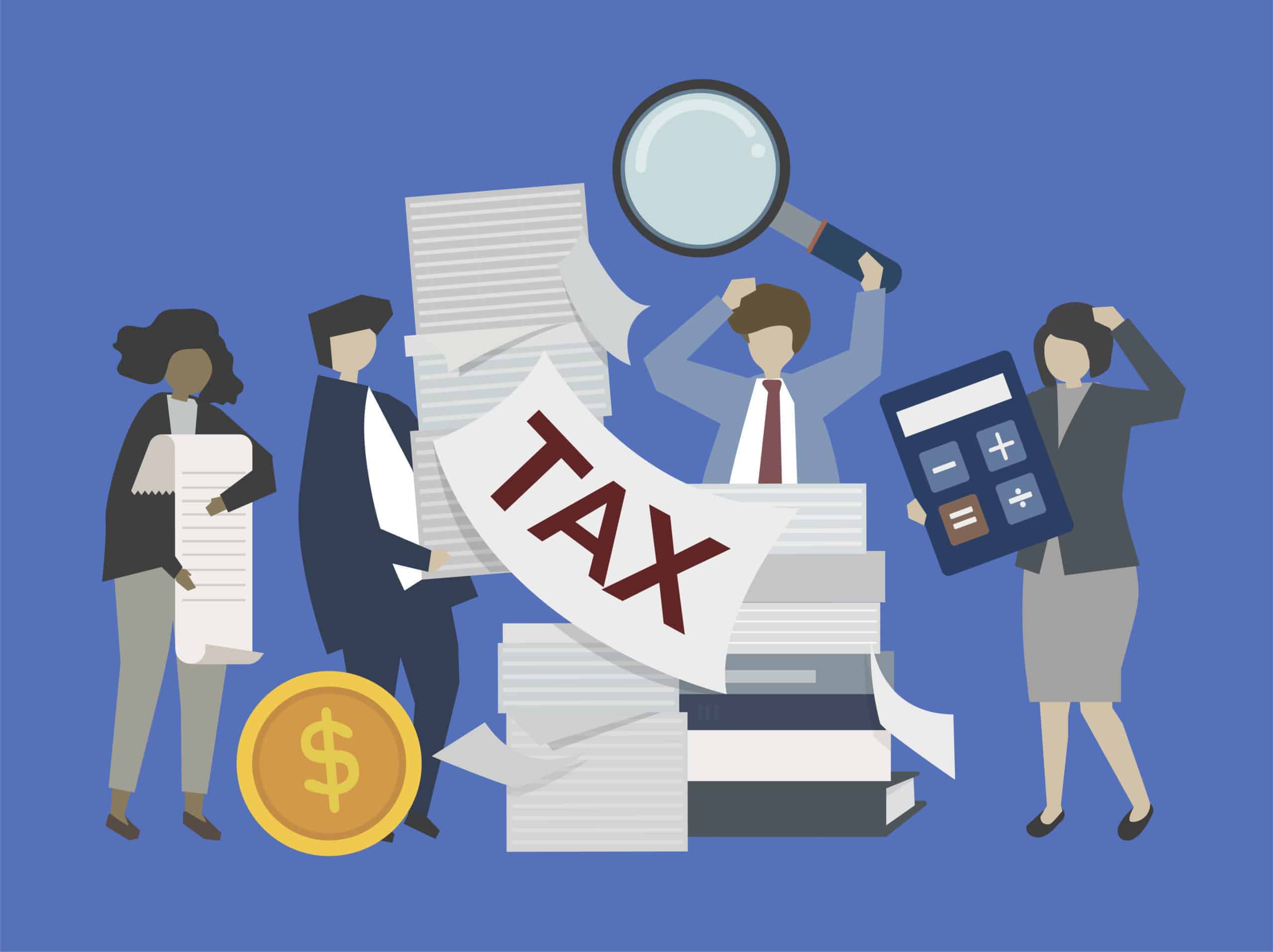Old vs New Tax regime comparison for Employees

The traditional Indian Direct tax system is a bit complicated. The tax rates in the old regime are high but there are a lot of exemptions and deductions which can bring down the tax liability.
In order to simplify this, a new Tax regime has been introduced from the financial year 2020-21, which may help to reduce the dependency of citizens on tax consultants and do their taxes on their own. The new tax regime comes with lower tax rates for individual and HUF taxpayers with a condition to forego certain tax deductions or exemptions.
Indian Income Tax allows employees and individuals to evaluate and choose between Old vs New Tax regime to maximise their tax savings.
Old Tax Regime – already existing tax system which will co-exist with the new tax system.
New Tax Regime – new tax system applicable from 1st April 2020 (Sec. 115BAC). It has lower tax rates but reduced exemptions & deductions as compared to old system.
Continue reading for further analysis of Old vs New Tax regime.
Income Tax Slab (Old vs New Tax regime)
Basic exemption limit in both the Tax Regimes is Rs. 2.5 lakh.
Basic exemption limit in the case of a Resident senior citizen who is 60 years or more is Rs. 3 lakhs in both the regimes.
Resident very senior citizen of the age of 80 years or more, continues to remain the same as before at Rs. 5 lakhs in both the regimes.
| Annual income | Old tax regime slabs | New tax regime slabs |
|---|---|---|
| Up to ₹ 2.5 lakhs | Nil | Nil |
| ₹ 2.5 lakhs to ₹ 5 lakhs | 5% | 5% |
| ₹ 5 lakhs to ₹ 7.5 lakhs | 20% | 10% |
| ₹ 7.5 lakhs to ₹ 10 lakhs | 20% | 15% |
| ₹ 10 lakhs to ₹ 12.5 lakhs | 30% | 20% |
| ₹ 12.5 lakhs to ₹ 15 lakhs | 30% | 25% |
| ₹ 15 lakhs and above | 30% | 30% |
Exemptions and Deductions (Old vs New Tax regime)
An exemption means a certain type of income which is not taxed at all. They are free of tax subject to certain conditions.
Deduction means certain investments or expenses which are allowed to be reduced from the income while calculating tax.
Out of 120 exemptions in the old regime, 70 have been removed in the new regime. Some important exemptions and deductions in Old vs New Tax regime are illustrated below.

| Salary Allowances & Deductions | Old Regime | New Regime |
|---|---|---|
| House Rent Allowance | Exempt (as Calculated) | Taxable |
| Leave Travel Allowance | Exempt (as Calculated) | Taxable |
| Child Education Allowance | Exempt (upto 2,400) | Taxable |
| Food Coupons | Exempt (50 per meal) | Taxable |
| Mobile Reimbursement | Exempt | Taxable |
| Standard Deduction – Salary | Deductible (upto 50,000) | No Deduction |
| Profession Tax | Deductible (upto 2,500) | No Deduction |
| House Property Deductions | Old Regime | New Regime |
|---|---|---|
| Interest on Housing Loan | Deductible (upto 2,00,000) | No Deduction |
| Other Source Deductions | Old Regime | New Regime |
|---|---|---|
| Family Pension Deduction | Deductible (upto 15,000) | No Deduction |
| Investments Deductions | Old Regime | New Regime |
|---|---|---|
| PF Contribution | Deductible (upto 1,50,000) | No Deduction |
| ELSS Mutual Fund | Deductible (upto 1,50,000) | No Deduction |
| FD of 5 Years with Bank / PO | Deductible (upto 1,50,000) | No Deduction |
| Sukanya Samridhi Deposit | Deductible (upto 1,50,000) | No Deduction |
| Housing Loan Re-payment | Deductible (upto 1,50,000) | No Deduction |
| Life Insurance Premium | Deductible (upto 1,50,000) | No Deduction |
| Tution Fees for Children | Deductible (upto 1,50,000) | No Deduction |
| NPS Contribution | Deductible (upto 1,50,000) | No Deduction |
| NPS Additional Contribution | Deductible (upto 50,000) | No Deduction |
| Medi-claim Premium | Deductible (upto 75,000) | No Deduction |
| Interest on Savings Account | Deductible (upto 10,000) | No Deduction |
| Interest on Deposits by Senior Citizens | Deductible (upto 50,000) | No Deduction |
| Interest on Loan for Higher Education | Deductible (no Limit) | No Deduction |
| Interest on Loan for Residential House | Deductible (upto 50,000) | No Deduction |
| Donations (50% allowed) | Deductible (upto 50%) | No Deduction |
| Donations (100% allowed) | Deductible (upto 100%) | No Deduction |
Benefits of the New Tax Regime
- Reduced Documentation – Most of the exemptions and deductions are not available in the new Regime, which will need less documentation of deduction certificates and make tax filing simpler. In the old regime, for assessment proceedings before the tax authorities, documentation and proof of investments are required, which will be reduced in the new regime.
- More Liquidity for Investors – Investors would prefer having liquidity in their hands and investing in instruments which have a flexible and open-ended tenure. Investors may not prefer to lock in funds in the prescribed tax saving instruments for the specified period. Most of the tax-saving investments in the old regime have a lock-in period, before which they cannot be withdrawn.
- Better Choices of Investments – The investors can opt for star-rated funds, which are performing better than the tax-saving instruments specified under the old regime. Tax saving instruments are mostly risk-averse in nature and may not provide significant returns.
- More Disposable Income – The new regime provides for concessional tax rates as compared to tax rates in the existing or old regime. A reduced tax rate would provide more disposable income to the taxpayer, who could not invest in specified instruments due to certain financial or other personal reasons.
Drawbacks of the New Tax Regime
- No Benefit for High-Income Individuals – Considering no investments are made, the maximum benefit that can be availed under the new tax regime is Rs. 75,000 which is due to reduced tax rates for lower-income slabs. It will benefit persons in the lower-income brackets. Individuals in the higher tax bracket will not benefit much.
- Certain tax deductions not available – The new tax regime does not allow the taxpayer to avail of certain specified deductions, which may otherwise help to better plan and reduce taxes.
- Old Regime Promotes Savings culture – By enforcing investments to save taxes, old regime promotes the savings culture in individuals for any future eventuality like medical, education, etc. If more individuals opt for the new regime, the savings rate would decrease.
Which one to Pick? Old vs New Tax regime
It is important to inform the employer at the beginning of the financial year about opting for the new tax regime so that the employer can deduct TDS accordingly. Also for the purpose of payment of advance tax this option has to be ascertained at the start of the financial year.
Looking at the reduction in tax rates New system looks better at first, but due to the non-availability of various deductions and exemptions, the position can change significantly. A combination of exemptions and deductions can bring down the taxable income by lakhs in the Old Regime.
If a taxpayer has already taken a Home loan, then he loses major deductions in the form of interest and principal repayment on a home loan (2,00,000 + 1,50,000) in the New regime. One has to lose the exemption for House Rent Allowance too which otherwise helps to reduce the taxable income to a great extent.
Majority of the people cover risks of life and health by taking insurance policies whose deduction can only be availed in the Old regime.
New taxation regime is better for those taxpayers who have started their careers and have fewer investments resulting in lesser deductions and exemptions.
A taxpayer having no investments or savings should go for new tax regime because of lower tax rates. However, if a taxpayer is having a home loan and other investments, then the old tax regime would be beneficial for him.
It is advisable to do a comparative calculation and analysis under both regimes, to see what works out best for each individual. There is no one-fit tax regime for all taxpayers.
Switching between Old vs New Tax regime
After opting for a tax regime, is it possible to again switch back to the previous tax regime?
Individual taxpayers can choose any regime every year which is beneficial to them, except for the Taxpayers having income from Business or Profession.
Individuals who have income from business or profession cannot switch between the new and old tax regimes every year. After opting for the new regime, they only get a single chance in their lifetime to move back to the old regime.
Further, once anyone switches back to the existing or old tax regime, he will not be able to opt for the new tax regime unless he stops earning any Business income.
Common Exemptions and Deductions in both Tax Regimes
| Salary Retirement Benefits | Old Regime | New Regime |
|---|---|---|
| Gratuity on Retirement | Exempt (upto 20,00,000) | Exempt (upto 20,00,000) |
| Gratuity on Death | Exempt (no Limit) | Exempt (no Limit) |
| Leave Encashment on Retirement | Exempt (upto 3,00,000) | Exempt (upto 3,00,000) |
| Leave Encashment on Death | Exempt (no Limit) | Exempt (no Limit) |
| VRS Amount | Exempt (upto 5,00,000) | Exempt (upto 5,00,000) |
| Commuted Pension | Exempt (upto 50%) | Exempt (upto 50%) |
| House Property Deductions | Old Regime | New Regime |
|---|---|---|
| Municipal Taxes of House Property | Deductible (no Limit) | Deductible (no Limit) |
| Standard Deduction – House Property | Deductible (upto 30%) | Deductible (upto 30%) |
| Investment Withdrawals | Old Regime | New Regime |
|---|---|---|
| PF Maturity Amount & Interest | Exempt (no Limit) | Exempt (no Limit) |
| NPS Maturity Amount & Interest | Exempt (no Limit) | Exempt (no Limit) |
| Sukanya Samriddhi Maturity & Interest | Exempt (no Limit) | Exempt (no Limit) |
| Life Insurance Maturity Amount | Exempt (no Limit) | Exempt (no Limit) |
| Tax Rebate | Old Regime | New Regime |
|---|---|---|
| Rebate u/s 87(a) | upto 12,500 | upto 12,500 |
Software for Income tax calculation
To calculate tax on salary you can use this old vs new tax regime calculator. It can be used for comparing the tax as per both regimes. Here an individual taxpayer can easily evaluate which option is better for him/her. The income tax department has also published an old vs new tax regime calculator utility.



